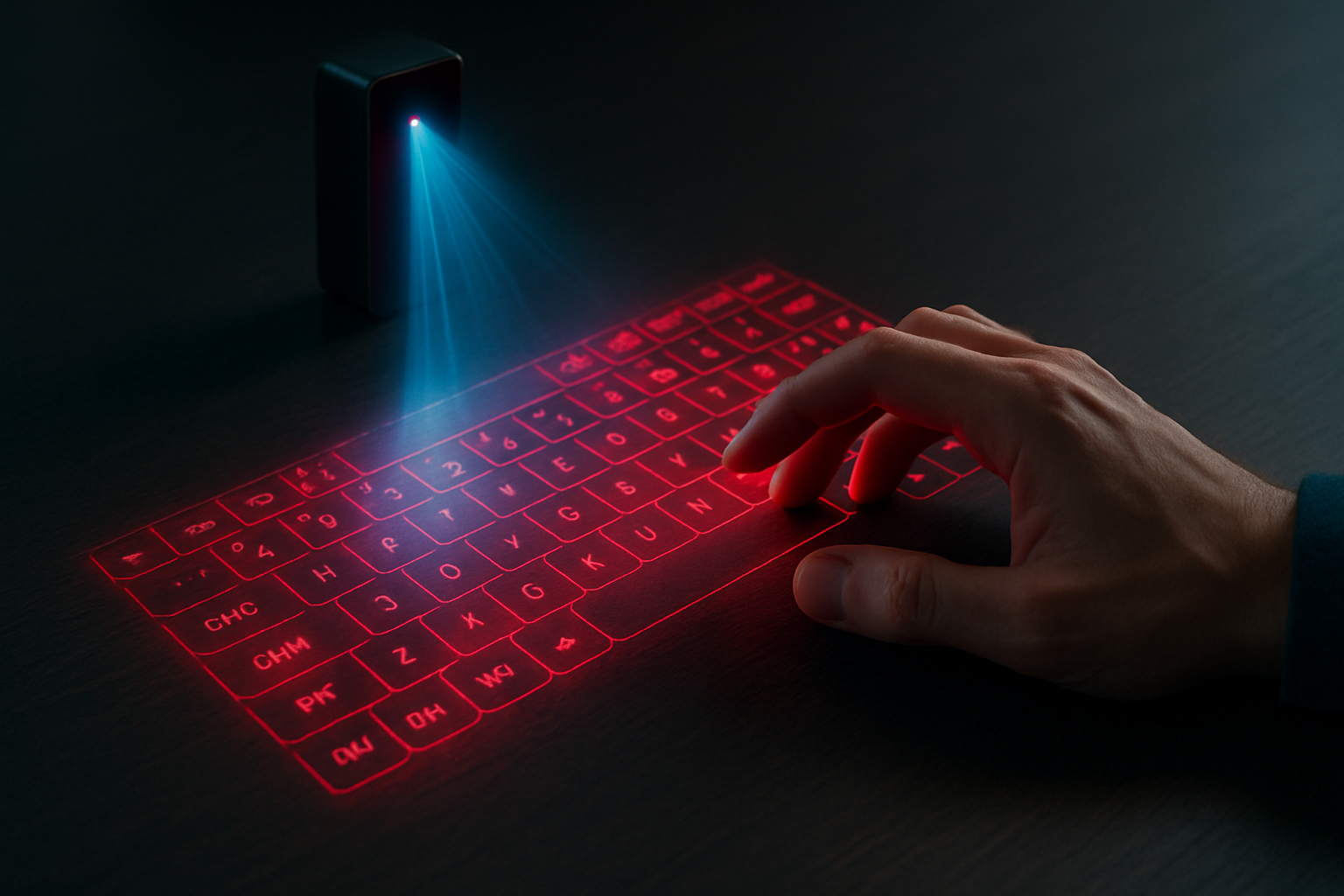Holographic Keyboards: Typing in Thin Air
In a world where technology continues to blur the lines between science fiction and reality, holographic keyboards are emerging as a futuristic input method that could revolutionize how we interact with our devices. These ethereal interfaces promise to free us from the constraints of physical keyboards, allowing us to type on any surface or even in mid-air. As we delve into this cutting-edge technology, we'll explore its potential to reshape our digital interactions and the challenges it must overcome to become a mainstream input solution.

How Holographic Keyboards Work
At their core, holographic keyboards rely on a sophisticated interplay of light projection and motion detection. A small projector emits an image of a keyboard onto a flat surface or into the air. Infrared sensors then track the movement of the user’s fingers, interpreting their actions as keystrokes. Some advanced systems even incorporate haptic feedback, using ultrasonic waves to create the sensation of touching keys that aren’t physically there.
The Promise of Portability
One of the most compelling aspects of holographic keyboards is their potential for extreme portability. Unlike traditional keyboards or even foldable alternatives, a holographic system could theoretically be integrated into a smartphone or smartwatch, allowing users to type on any surface at a moment’s notice. This could be a game-changer for mobile productivity, enabling users to work comfortably without carrying additional hardware.
Challenges and Limitations
Despite their futuristic appeal, holographic keyboards face several hurdles on their path to widespread adoption. Accuracy remains a significant concern, as the lack of physical keys can make it difficult for users to orient their fingers correctly. Additionally, the technology struggles in bright lighting conditions, which can interfere with the projections and sensors. Battery life is another consideration, as the constant projection and sensing require substantial power.
Current Market Offerings and Future Prospects
While fully realized holographic keyboards are not yet commonplace, several companies have introduced products that hint at their potential. Devices like the Celluon Epic and the Serafim Keybo project a laser keyboard onto flat surfaces, offering a glimpse of what future iterations might achieve. These products typically range from $100 to $200, positioning them as niche accessories for tech enthusiasts.
Looking ahead, the future of holographic keyboards may lie in their integration with AR and VR systems. As these technologies mature, we could see holographic interfaces that adapt to our surroundings, appearing on any surface or floating in mid-air as needed. This convergence could lead to entirely new ways of interacting with our digital world, far beyond simple text input.
The Ergonomic Question
As we consider the potential of holographic keyboards, it’s crucial to address the ergonomic implications. Traditional keyboards, for all their bulk, provide tactile feedback and a familiar layout that many users find comfortable for extended typing sessions. Holographic alternatives will need to overcome the lack of physical resistance and find ways to reduce strain on users’ hands and wrists to be viable for long-term use.
Privacy and Security Considerations
The use of projection and motion tracking technology in holographic keyboards raises important questions about privacy and security. How can users ensure that their keystrokes aren’t being captured by malicious observers? Developers will need to implement robust encryption and security measures to protect sensitive information input through these virtual interfaces.
The Road to Mainstream Adoption
For holographic keyboards to move beyond novelty status and become a mainstream input method, several key improvements are necessary. Enhanced accuracy, better performance in varied lighting conditions, and increased battery efficiency are all critical factors. Additionally, the technology will need to prove its worth in terms of speed and comfort compared to traditional typing methods.
As we stand on the cusp of this technological leap, holographic keyboards represent more than just a new way to type—they symbolize our evolving relationship with technology. By freeing us from physical constraints, they open up new possibilities for how and where we can work and interact with our devices. While challenges remain, the potential for holographic keyboards to transform our digital interactions is undeniable, offering a tantalizing glimpse into a future where the boundaries between the physical and digital worlds continue to blur.





